Choosing the Best Screw Anchor for your job and installing it properly can be a challenge, with such a large variety of screw anchors and toggle bolts available. Choosing the correct anchor for the job can be quite confusing and somewhat intimidating. There are anchors are for drywall, anchors for concrete and brick, and some anchors are for both. With some general information and basic instruction you will be able to install Drywall Anchors and Masonry Anchors like a pro.
Screw Anchors can be used to install a variety of materials in drywall or masonry products. Materials such as:
- Mirrors
- Curtain Rods
- Art work
- Framed Photos
- Towel Bars
- Small Shelves
- And more…
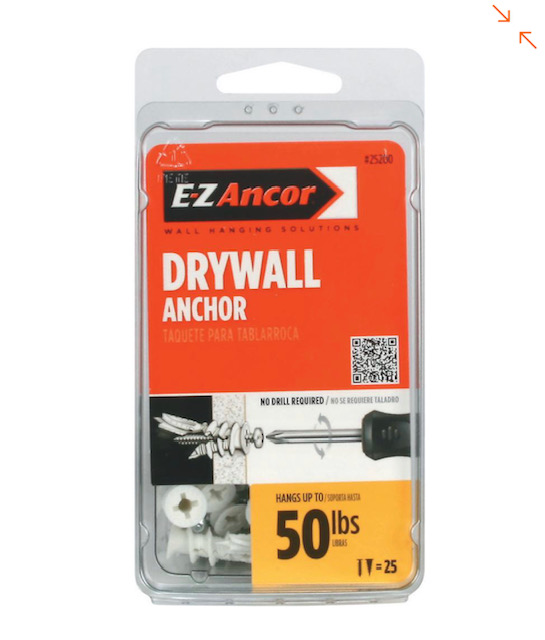
Here are some of the best screw anchors that are available for drywall installations:
- Self tapping twist and lock drywall anchor
- Ribbed expanding screw anchor
- Standard ribbed screw anchor
- Winged Toggle bolt
Here are some anchors available for concrete, block and brick installation.
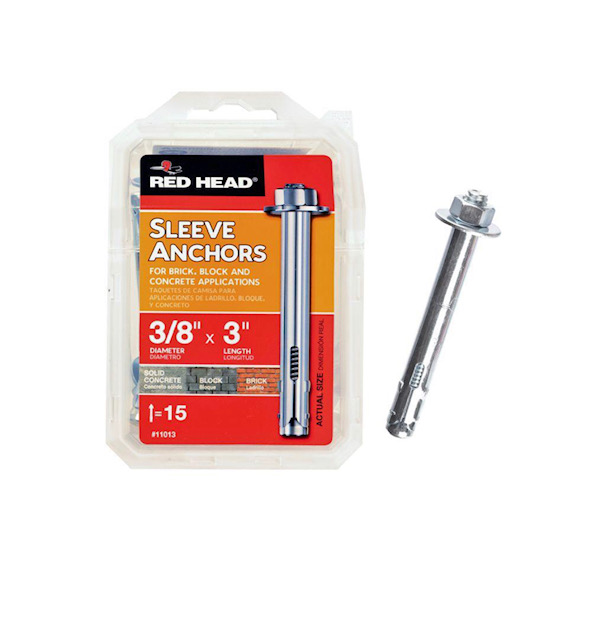
- Standard ribbed screw anchor
- Lag Shields
- Wedge anchors
- Hammer set nail drive concrete anchors
The major difference between screw anchors in the drywall category is the strength and ease of installation. Each anchor is rated for different weight loads and have a slightly different installation processes.
Installing Self Tapping Drywall Anchors:
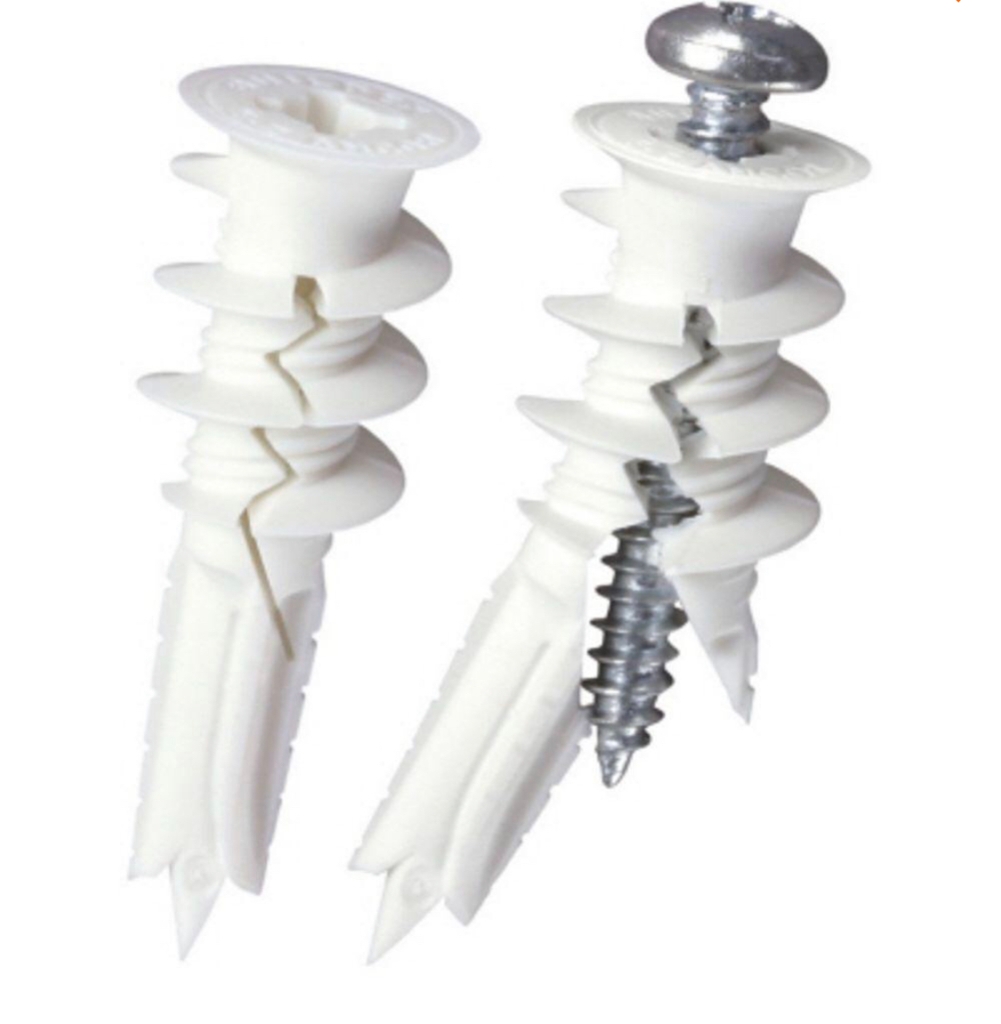
- Determine location for anchor to be placed. (Anchors can not easily be shifted. So be sure the location you choose is correct before beginning installation)
- Start by poking a small hole in the drywall. The hole should be approximately the size of the screw that is included with the anchor. Use a small drill bit or a awl to make the hole.
- Now, gently hammer the anchor into the hole. Stop when you get to the threads.
- Using a screwdriver turn the anchor into the drywall using gentle pressure. Ensure that the threads are catching the drywall and spinning in evenly. If the drywall begins to protrude out as you spin in the anchor more pressure may be required.
- The drywall anchor should be twisted until it is flush with the wall.
- Finally, drive the screw into the drywall anchor (using a screw gun or drill with a Phillips head tip is preferred) drive the screw until The head barely touches the anchor. Then carefully back it out to desired depth.
- Our choice for the best screw anchor for drywall
Installing Standard Ribbed Screw Anchor:
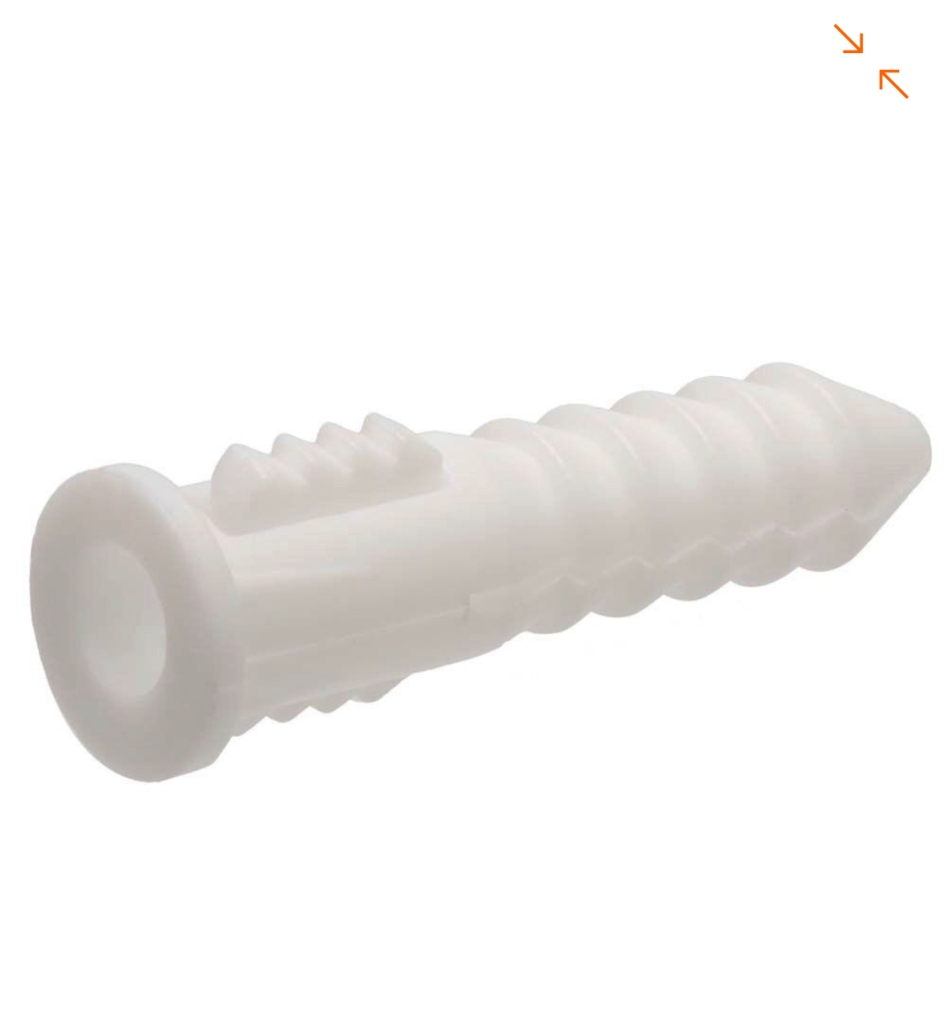
- Determine location for anchor to be placed. (Anchors can not easily be shifted. So be sure the location you choose is correct before beginning installation)
- Start by poking a small hole in the drywall. The hole should be approximately the size of the tip of the anchor. Use a small drill bit or a awl to make the hole.
- Now, gently hammer the anchor into the hole. Stop when the anchor head reached the wall.
- Finally, screw in the drywall anchor (using a screw gun or drill with a Phillips head tip is preferred) drive the screw to the desired depth and stop, do not over tighten.
Installing Ribbed Expanding Screw Anchor:
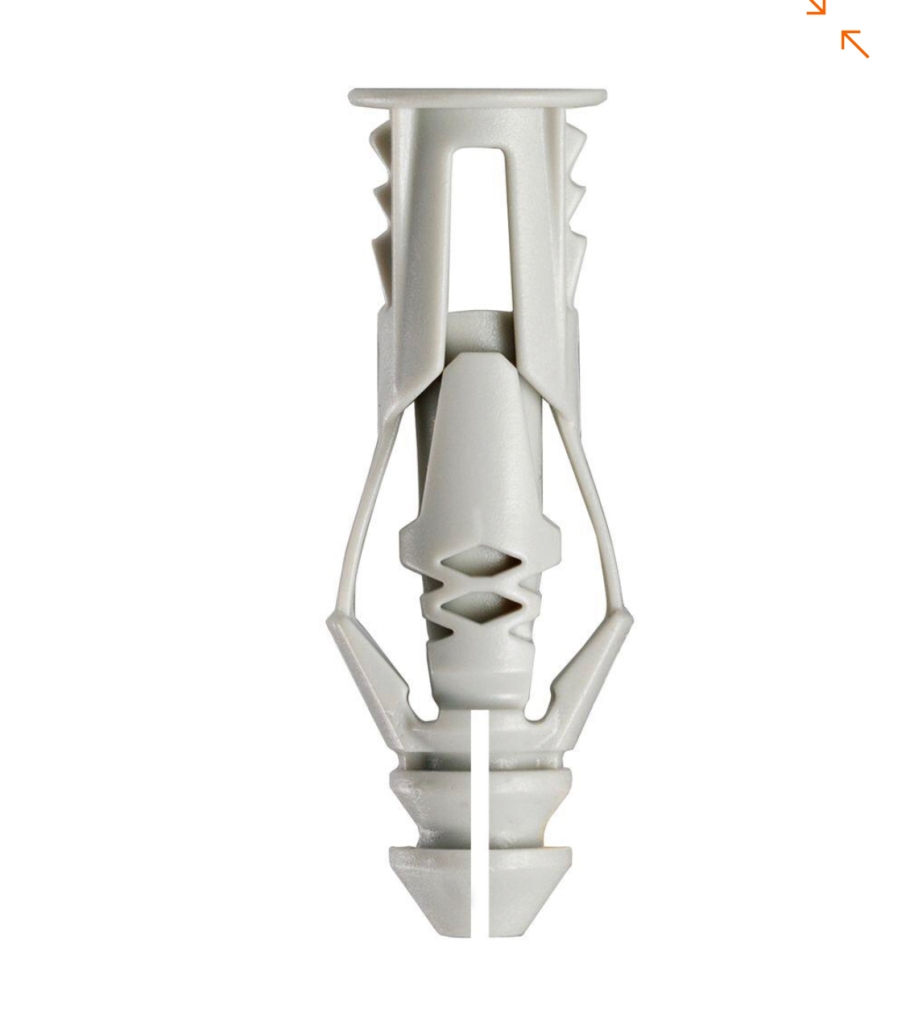
- Determine location for anchor to be placed. (Anchors can not easily be shifted. So be sure the location you choose is correct before beginning installation)
- Start by poking a small hole in the drywall. The hole should be approximately the size of the tip of the anchor. Use a small drill bit or a awl to make the hole.
- Now, gently hammer the anchor into the hole. Stop when the anchor head reached the wall.
- Finally, drive the screw into the drywall anchor (using a screw gun or drill with a Phillips head tip is preferred) drive the screw until The head barely touches the anchor. Then carefully back it out to desired depth.
Installing a Winged Toggle Bolt:
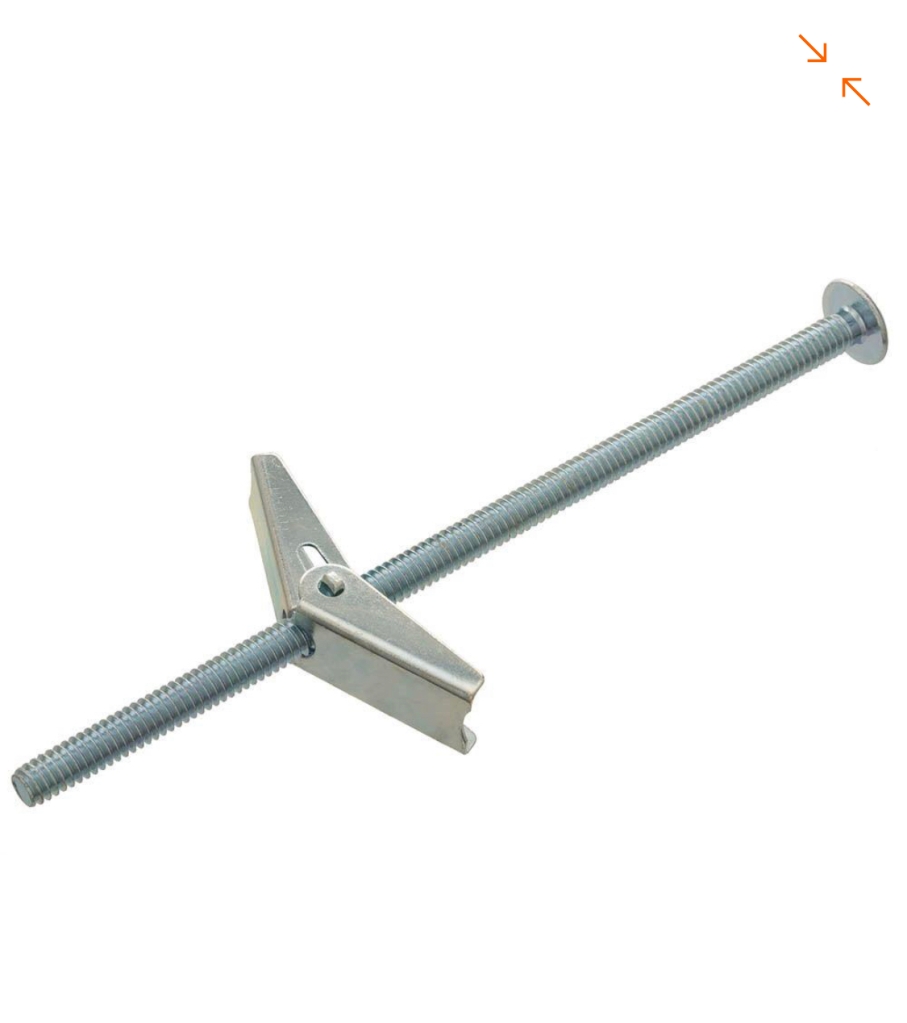
- Determine location for anchor to be placed. (Anchors can not easily be shifted. So be sure the location you choose is correct before beginning installation)
- Start by poking a small hole in the drywall. The hole should be approximately the size of the tip of the wing when closed. Use a small drill bit to make the hole.
- Now, gently hammer the anchor into the hole. Stop when the anchor head reached the wall.
- Finally, drive the screw into the drywall anchor (using a screw gun or drill with a Phillips head tip is preferred) drive the screw until The head barely touches the anchor. Then carefully back it out to desired depth.
- Insert the bolts through the material to be mounted. Winged Toggle Bolt
weight capacity: 75 lb to 125 lb depending upon size - Now, place the wing on the bolt making an “arrow” pointing away from the bolt head. Thread the wing to approximately 1/8 inch from the end of the bolt.
- Close the wing and inserted through the hole in the drywall.
- Push the wing through until it opens and pull it back into the drywall so the sharp edges slightly dig into the inside of the wall.
- Keeping tension on the bolt pulled tightly against the inside of the wall. Now start driving the screw with a Phillips head screwdriver or drill/screw gun.
- Tighten screw until it fits snugly against the wall then give a couple extra turns with a hand screwdriver
Best Screw Anchors For Masonry
When Installing screw anchors in masonry products, it is imperative to choose the correct anchor. Each screw anchor has a specific use depending upon the material you are attaching to the masonry.
Standard Ribbed Screw Anchor:
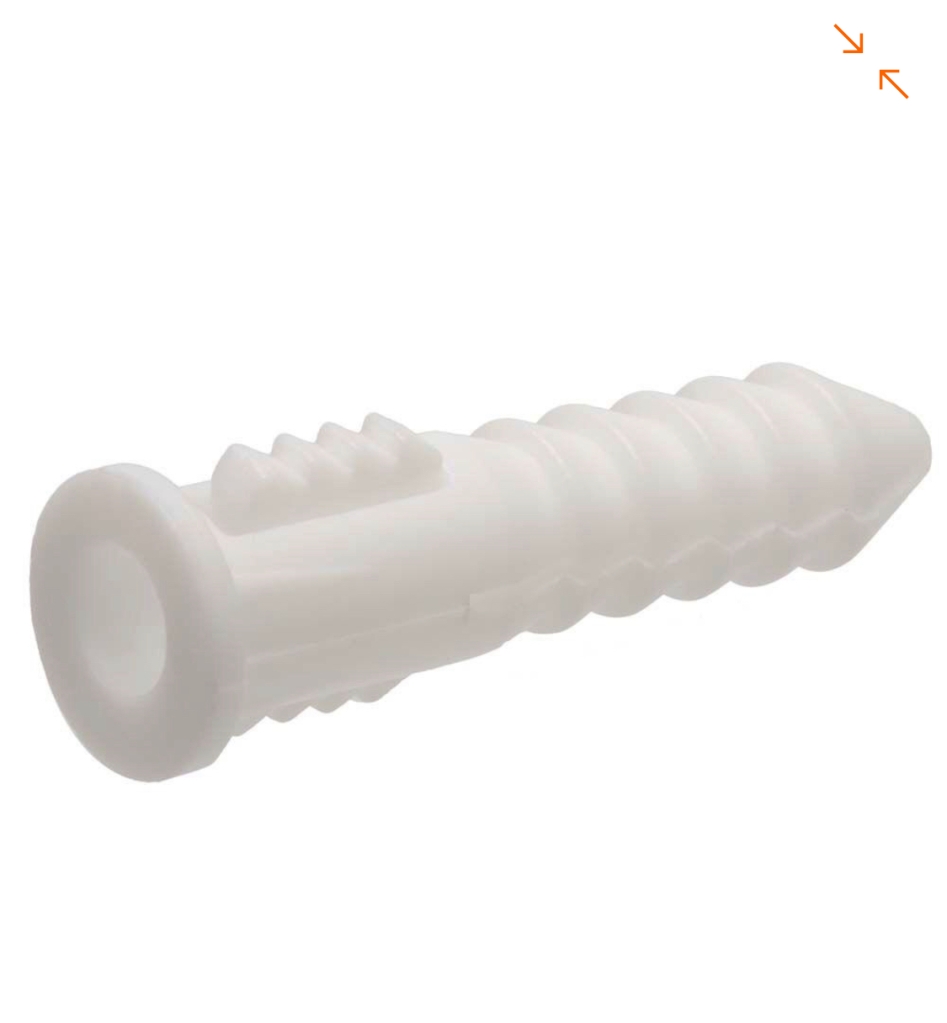
- Determine the location for installing the anchor. (As with drywall, anchors cannot easily be shifted. So choosing the correct location is important.)
- Select a masonry drill bit to make a hole in the wall. The drill bit should be the same size as the circumference of the flares on the anchor.
- Drill the hole at least as deep as the anchor is long +1/8 inch.
- Insert the anchor into the hole until the head of the anchor is flush with the wall.
- Finally, drive the screw into the anchor using light pressure to desired depth. Use either a Phillips head screwdriver or drill/screw gun to drive the screw..
Lag Shield:
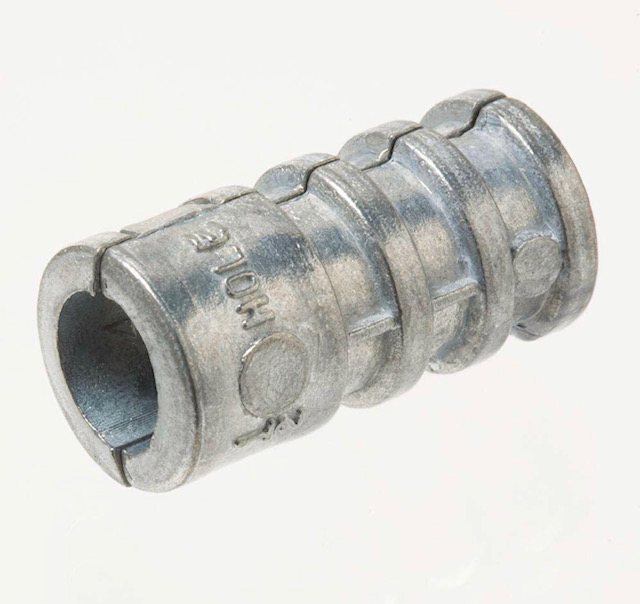
- Determine the location for installing the anchor. (As with drywall, anchors cannot easily be shifted. So choosing the correct location is important.)
- Select a masonry drill bit to make a hole in the wall. The drill bit should be the same size as the circumference of the anchor.
- Drill the hole at least as deep as the anchor is long +1/8 inch.
- Insert the anchor into the hole until the head of the anchor is flush with the wall.
- Finally, drive the lag screw into the anchor using force to desired depth. Use a drill/screw gun to drive the screw.
Wedge Anchor:
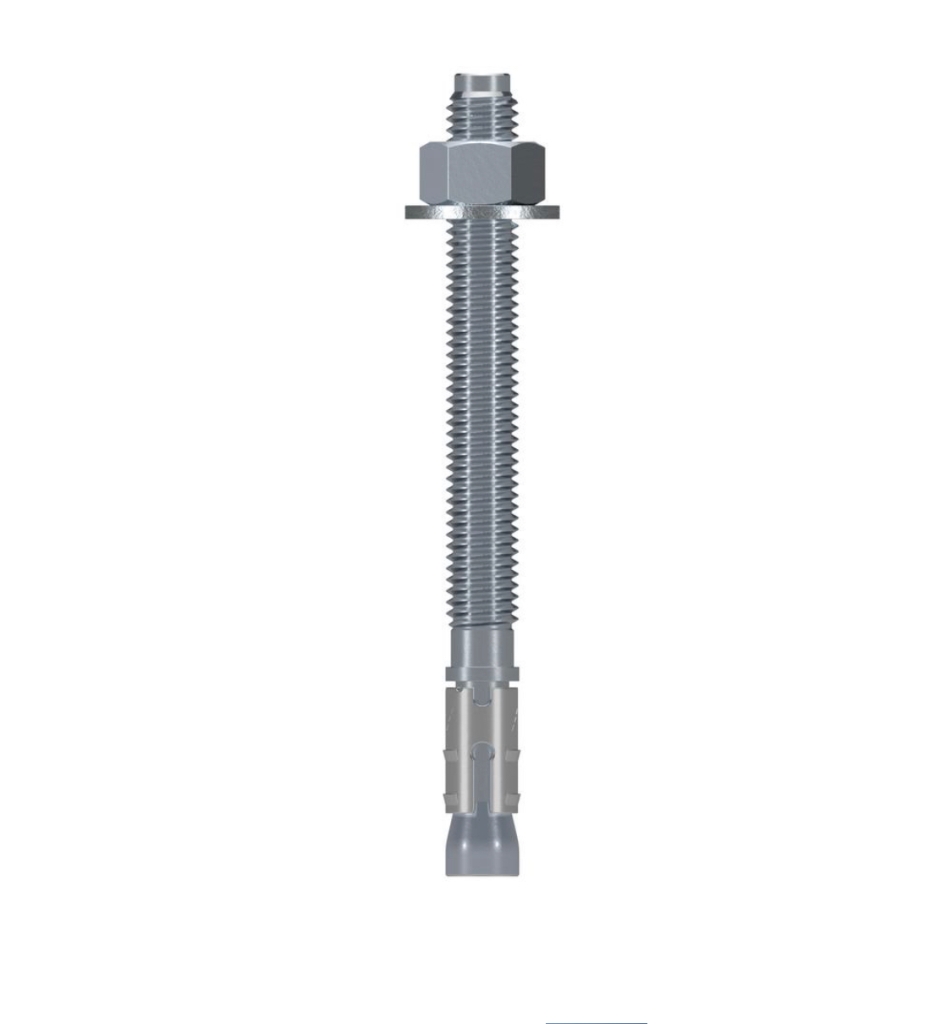
- Determine the location for installing the anchor. (As with drywall, anchors cannot easily be shifted. So choosing the correct location is important.)
- Select a masonry drill bit to make a hole in the wall. The drill bit should be the same size as the circumference of expandable sleeve on the anchor.
- Drill the hole at least as deep as the anchor is long +1/8 inch.
- Insert the anchor into the hole until the washer is tight to the wall.
- Drive the nut onto the anchor using a wrench or socket. Tighten until the fastener is secure and does not move.
- Remove nut and washer
- Place the material to be fastened over the bolt and re-attach the washer and nut.
Hammer Set Nail Drive Concrete Anchor:
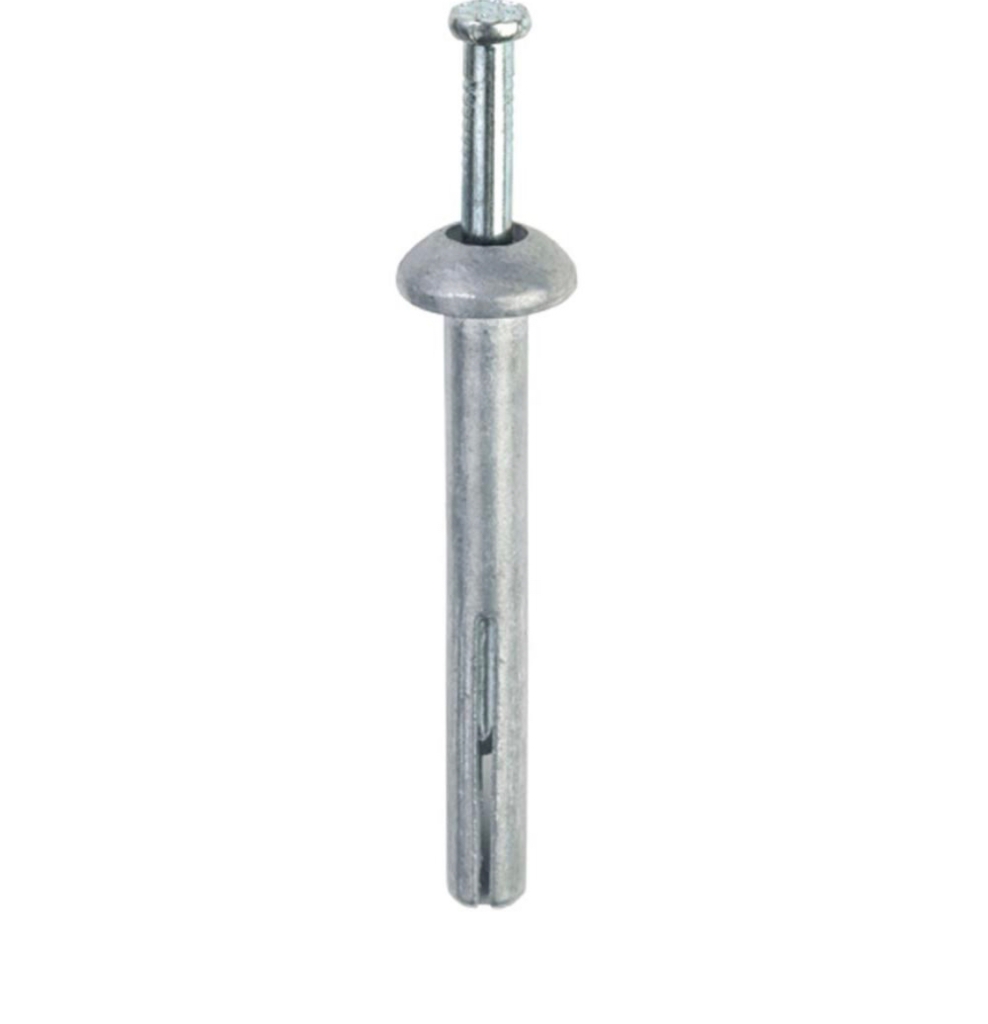
- Determine the location for installing the anchor. (These anchors can not be moved once installed. So choosing the correct location is very important.)
- Select a masonry drill bit to make a hole in the wall. The drill bit should be the same size as the circumference of the anchor sleeve.
- Drill the hole at least as deep as the anchor is long +1/8 inch.
- Insert the anchor into the hole until the head of the anchor is tight to the wall.
- Finally, place the anchor through the material to be fastened and firmly hammer the nail into the sleeve until flush with the anchor head.
Pros and Cons
Drywall:
Self tapping twist and lock drywall anchor
- In most cases this is the best screw anchor for drywall
- Easy to install
- Strong
Ribbed expanding screw anchor
- Can be tricky to install
- Strong
- good for narrow profile installations
Standard ribbed screw anchor
- Most cost efficient
- Readily available
- good for narrow profile installations
Winged toggle bolt
- Most difficult to install
- Not for all applications
- Very strong
Masonry:
Standard ribbed screw anchor
- Most cost efficient
- Readily available
- good for narrow profile installations
- Quite strong when installed in masonry
- Typically used for hanging medium to light materials
Lag Shields
- Used for anchoring large diameter lag screws
- Strong, especially when used with epoxy
Wedge anchors
- My preferred anchor for masonry
- Very strong
- Easy to install
- works for many types of installations
Hammer set nail drive concrete anchors
- Easy to install
- Very strong
- Not much room for error
To install screw anchors like a pro, measure twice and poke holes once. Take your time and do not rush. Select the BEST SCREW ANCHOR for the job and use the proper tools. Doing this and you should have great results with your project installation.
